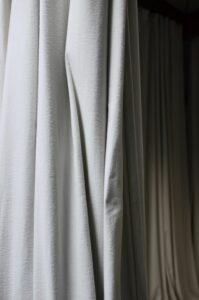Contents
Is 80 Cotton and 20 Polyester Good?
When it comes to choosing fabrics for our everyday clothing and textiles, it’s easy to get lost in a bewildering array of options. One question that often arises in the world of fabrics is, “Is 80% cotton and 20% polyester good?” It’s a valid question because the fabric composition can significantly impact comfort, durability, and overall satisfaction with your clothing and home textiles. In this article, we’ll embark on a journey to unravel the mysteries of the 80/20 cotton-polyester blend, exploring its characteristics, advantages, disadvantages, and practical applications, all while keeping it relatable and understandable for everyone.
Understanding Cotton and Polyester Fabrics
Before we dive into the specifics of the 80/20 blend, let’s get to know its main components: cotton and polyester.
Cotton, often referred to as “the fabric of our lives,” is a natural fiber that many of us know and love. Imagine your favorite worn-in t-shirt. Chances are, it’s made of cotton. Cotton is celebrated for its breathability, softness, and comfort. It’s the kind of fabric you’d choose for a sunny day out because it feels gentle against your skin and allows air to circulate, keeping you cool and comfortable.
Polyester, on the other hand, is a synthetic fiber with a reputation for toughness. Think of that trusty backpack you’ve had for years or those workout clothes that have seen more miles than you can count. Polyester is durable, and it has a knack for staying wrinkle-free. It’s the workhorse of the fabric world, capable of withstanding wear and tear without losing its shape.
The Advantages of an 80/20 Cotton-Polyester Blend
So, what makes the 80/20 cotton-polyester blend a compelling choice for many? Let’s break it down further with some relatable examples.
Comfort and Softness
Imagine slipping into your favorite t-shirt. You know, the one that’s so soft, it feels like a gentle hug. That luxurious softness often comes from the cotton content in the fabric. Now, imagine that same t-shirt lasting a long time without losing its shape or getting holes after a few washes. That’s where the polyester in the blend comes into play. The 80/20 blend offers the best of both worlds: the comforting softness of cotton and the durability of polyester. It’s like wearing a cloud that can withstand life’s adventures.
Durability and Longevity
Think about those jeans you’ve had for years, the ones that have seen countless hikes, bike rides, and lazy afternoons on the couch. Chances are, they’re made from a cotton-polyester blend. The polyester component adds strength and longevity to the fabric, so your 80/20 blend garments endure daily wear and multiple laundry cycles. They retain their shape and color, standing the test of time.
Reduced Wrinkling
Raise your hand if you enjoy spending quality time with your ironing board. No one? That’s what we thought. Well, here’s where the 80/20 blend comes to the rescue. Polyester’s wrinkle-resistant properties mean less time spent wrestling with wrinkles and more time enjoying life. Your clothes stay looking fresh and ready to go, even when you’re not.
Moisture-Wicking Properties
Picture yourself hitting the gym or going for a long hike on a sweltering day. You’re working up a sweat, but your clothes somehow manage to keep you feeling dry and comfortable. This magical feat is thanks to the moisture-wicking properties of the 80/20 blend. It wicks away sweat, ensuring you stay cool and dry, no matter the situation.
Cost-Effectiveness
We all appreciate quality clothing, but it doesn’t have to come with a hefty price tag. The 80/20 blend offers an excellent balance between affordability and performance. You get a durable, comfortable fabric without emptying your wallet. It’s like finding a hidden gem in the world of fabrics.
The Disadvantages of an 80/20 Cotton-Polyester Blend
While the 80/20 blend boasts numerous advantages, it’s not without its drawbacks. Let’s take a closer look with relatable scenarios.
Limited Breathability
Remember that scorching summer day when you wished you were wearing a more breathable fabric? The 80/20 blend, while more breathable than pure polyester, can’t quite match the airy comfort of 100% cotton. So, on the hottest of days, you might find yourself yearning for a bit more airflow.
Less Absorbent than Pure Cotton
Have you ever spilled your morning coffee on your shirt? We all have those moments. Pure cotton is known for its absorbency, but the polyester in this blend reduces that capacity. It means the fabric won’t soak up moisture as effectively, which could be a consideration for those who tend to sweat a lot.
Environmental Concerns
Environmental consciousness is on the rise, and for good reason. Polyester is derived from petrochemicals, making it less eco-friendly than natural fibers like cotton. If you’re environmentally conscious and looking for sustainable options, you might want to explore fabrics made from organic cotton or other eco-friendly materials.
Allergic Reactions
Some individuals have sensitive skin that can react to polyester, leading to skin irritation. Imagine the discomfort of an itchy rash from your clothing. If you have skin that’s prone to allergies, it’s a good idea to test a small area before committing to the 80/20 blend. Nobody wants clothes that feel like a cactus hug.
Applications and Use Cases
Now that we’ve delved into the characteristics and pros and cons of the 80/20 blend, let’s explore where you might encounter this fabric in your daily life.
Apparel
T-Shirts
Think of your go-to t-shirt—the one you reach for when you want comfort and versatility. Odds are, it’s made from the 80/20 blend. It’s perfect for casual outings, whether you’re grabbing coffee with friends or lounging around on a lazy Sunday.
Sweatshirts
Remember that cozy sweatshirt you throw on when the weather turns chilly? Chances are, it’s crafted from the 80/20 blend. It’s like a warm, comforting hug, making it a must-have for the colder months.
Athletic Wear
Imagine your workout gear, the clothes that help you push through those extra reps or run that extra mile. The 80/20 blend is a top pick for sportswear because of its moisture-wicking properties. It keeps you dry and comfortable, even during the toughest workouts.
Home Textiles
Bedding
Now, think about your bed linens and pillowcases. You want them to be soft and cozy for a good night’s sleep, right? Bedding made from the 80/20 blend offers both softness and durability, ensuring you get the rest you deserve.
Curtains
Dressing your windows is essential for creating a comfortable living space. Curtains made from the 80/20 blend not only look great but also resist wrinkles. They maintain their elegance without requiring constant adjustments.
Upholstery
Imagine a stylish sofa that can withstand the occasional spill or pet hair. Furniture upholstered with the 80/20 blend combines aesthetics with practicality, making it a fantastic choice for homes with families and pets.
Industrial Use
Workwear
Do you know someone who works in a demanding job, like construction, where their clothing takes a beating daily? Many professionals rely on the 80/20 blend for its durability and ease of care. It’s like a uniform that can handle the toughest tasks.
Uniforms
Whether it’s school uniforms or corporate attire, the 80/20 blend is a popular choice for uniforms. It balances comfort, durability, and cost-effectiveness, making it the go-to option for organizations worldwide.
Care and Maintenance
To ensure your 80/20 cotton-polyester blend items stay in top shape, follow these practical care tips:
Washing and Drying Tips
Imagine doing laundry on a Sunday afternoon. To preserve the color and shape of your 80/20 blend clothing, machine wash them in cold water. It’s like giving your clothes a spa day. And when it comes to drying, use a low heat setting to prevent excessive shrinkage. Your clothes will thank you by looking great for longer.
Ironing and Steaming
We’ve all had those moments when we need to look sharp. If your 80/20 blend clothing needs some smoothing out, use a low heat setting on your iron to avoid damaging the fabric. It’s like giving your clothes a quick makeover.
Stain Removal
Spills happen, but they don’t have to ruin your day. Treat stains promptly with appropriate stain removers to prevent them from setting in. It’s like a superhero swooping in to save the day.
Choosing the Right Blend Percentage
Not all 80/20 blends are created equal, and the ratio of cotton to polyester matters. Consider these factors when making your choice:
Comfort
Imagine a warm summer day when the temperature is soaring. If softness and breathability are top priorities, lean towards a higher cotton percentage. It’s like giving your skin a gentle breeze.
Purpose
Think about the intended use. For sportswear that needs to keep you dry during workouts, a balanced blend with moisture-wicking properties is ideal. It’s like having a personal cooling system.
Climate
Consider your climate. In regions with scorching summers, more breathable fabrics may be your best friend. On the other hand, if you’re in a colder area, the warmth of an 80/20 blend will feel like a cozy embrace.
Brands and Products
When shopping for 80/20 cotton-polyester blend items, you’ll encounter various brands and products. Check out consumer reviews and ratings to make an informed decision. To give you a taste, here are a few renowned brands known for their quality 80/20 blend products:
- Hanes: They offer a range of comfortable and durable t-shirts and sweatshirts.
- Fruit of the Loom: Known for their classic t-shirts that are perfect for everyday wear.
- Gildan: They provide affordable and long-lasting 80/20 blend apparel.
Sustainability and Ethical Considerations
It’s important to be aware of the environmental impact of polyester production. If sustainability matters to you, explore eco-friendly alternatives and look for brands committed to ethical sourcing and manufacturing. Imagine choosing clothing that not only makes you feel good but also aligns with your values. It’s like wearing your principles on your sleeve.
Frequently Asked Questions
Let’s address some common queries about the 80/20 cotton-polyester blend.
Is 80/20 Cotton-Polyester Blend Good for Allergies?
Imagine having sensitive skin that’s prone to allergies. In some cases, polyester can cause skin irritation. To avoid discomfort, it’s advisable to test a small area of the fabric before committing to the blend. Nobody wants clothes that feel like a prickly cactus.
Can You Customize the Blend Percentage?
In most cases, fabric blends come as-is, with predetermined percentages of cotton and polyester. If you have specific requirements, you may need to explore custom fabric options. Imagine having clothing tailored to your exact preferences. It’s like having a wardrobe that’s uniquely you.
How to Tell if an Item is 80% Cotton and 20% Polyester?
Checking the fabric composition is as easy as flipping the item’s tag or label. It should clearly indicate the percentages of cotton and polyester. Imagine having a secret decoder for your clothes. It’s like reading the story behind your favorite garments.
Conclusion
In the quest for the perfect fabric, the 80/20 cotton-polyester blend offers a compelling blend of comfort, durability, and affordability. It’s like finding the Goldilocks fabric—not too soft, not too tough, just right. But the answer to the question, “Is 80% cotton and 20% polyester good?” depends on you and your unique needs. Armed with this knowledge, you can make a decision that feels just right for you. So go ahead, embrace the 80/20 blend, and enjoy the comfort and style it brings to your life. Happy blending!
blend of comfort, durability, and affordability. It’s like finding the Goldilocks fabric—not too soft, not too tough, just right. But the answer to the question, “Is 80% cotton and 20% polyester good?” depends on you and your unique needs. Armed with this knowledge, you can make a decision that feels just right for you. So go ahead, embrace the 80/20 blend, and enjoy the comfort and style it brings to your life. Happy blending!





